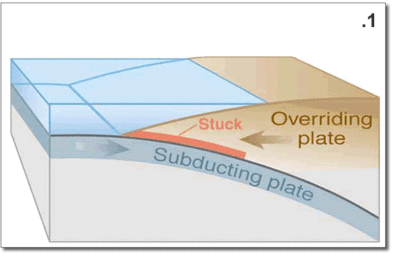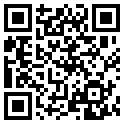Earthquakes: Sea-quakes & Tsunamis
Large shallow earthquakes generate the most destructive tsunamis where their epicentre is on a fault line along the ocean floor.
Tectonic subduction and tectonic plate boundaries are the areas most likely to cause tsunamis. Collision of these tectonic plates in these areas of high seismicity cause large earthquakes as the plates move past each other, tilting, offsetting or displacing large areas of ocean floor from just a few kilometres up to 1,000 or more. These abrupt, large, vertical displacements of ocean floor disturb the ocean surface and generate destructive tsunamis as the water is displaced.
The earthquake lifts or lowers the seabed. A tsunami can be generated when the earthquake causes a sudden vertical deformation of the seafloor, thus displacing the overlying water from its equilibrium position. When thrust faults move abruptly a tsunami can be generated when associated with destructive or convergent plate boundaries. This is because of the vertical component of movement and abrupt displacement. Movement on normal faults will also cause displacement of the seafloor but, if the land moves from side to side, not much will happen to the water. Due to the size of such events they are usually too small to generate a large tsunami. On the contrary, if the land moves up or down, it displaces a large body of water. Since water seeks to level itself, this displaced water will attempt to adjust itself in the form of waves.
Subduction zone related earthquakes are particularly effective in generating tsunamis.
Although most tsunamis are caused by underwater earthquakes, it is to be noted however that not all underwater earthquakes cause tsunamis:
- usually, an earthquake has to be over about magnitude 7.0 on the Richter scale for it to produce a destructive tsunami. Only from this intensity upwards is there enough energy released to rapidly displace enough water to create a tsunami;
- an earthquake must have it's epicentre near the Earth's surface.
Tsunamis generated by subduction
"A subduction" zone is a boundary between tectonic plates that are part of the Earth's shell. These plates descend or subduct under an adjacent plate. Sudden movement of the plates causes them to stick and generate an earthquake.

The overriding plate gets squeezed as it sticks to the subducting plate. This pushes the leading edge down and the rear area bulges upward. Slowly building stress over centuries the movement continues.
When an overriding plate breaks free and rises seaward the seafloor rises and lifts the water above it creating an earthquake along the subduction zone. A tsunami is generated. As the bulge end of the plate collapses it thins out and lowers coastal areas.
The tsunami races off in two different directions, one,growing in size towards landfall nearby, the other to a distant shore.
For You and Your Loved Ones
With preparedness and safety measures, protect yourself and your family from earthquake risks.
Always good to prepare for an earthquake
Earthquake Warnings are a Game Changer
Stay protected, anytime, anywhere

HAPPY CLIENTS
ALERTS DELIVERED SINCE 2011

